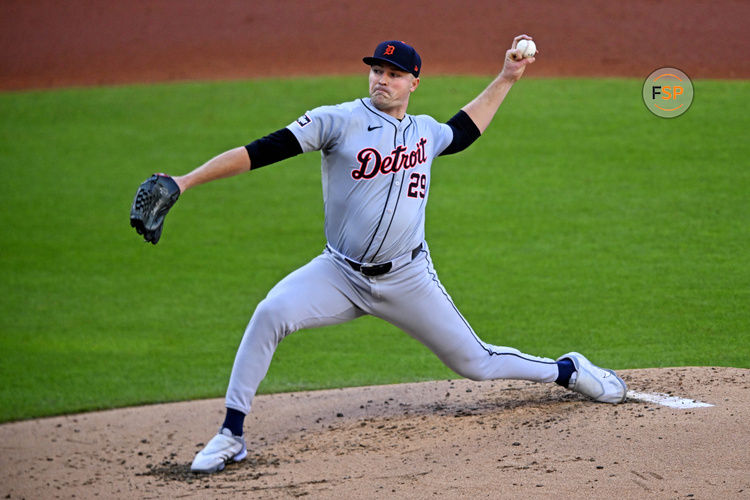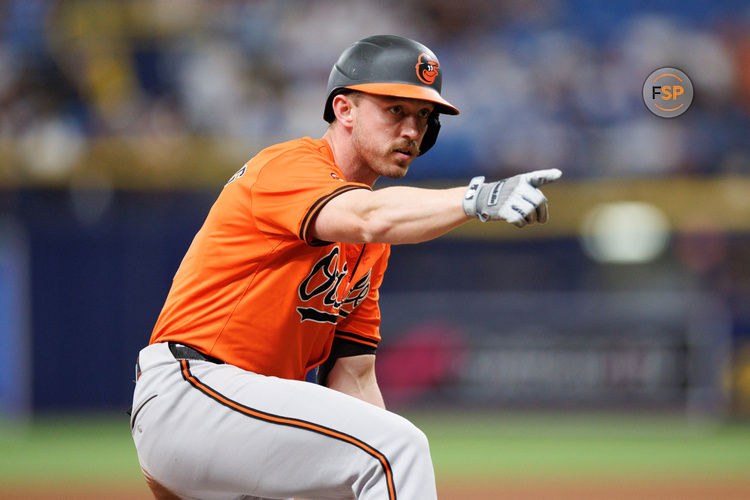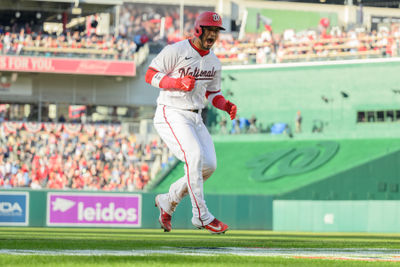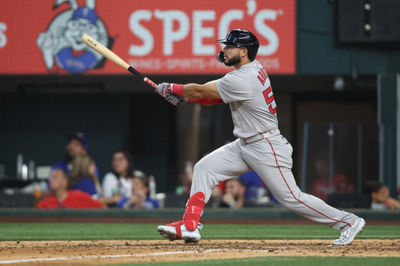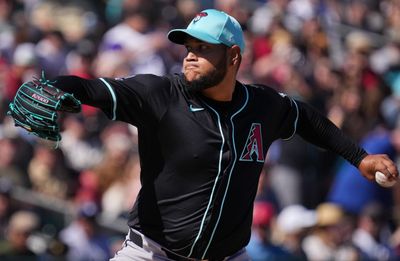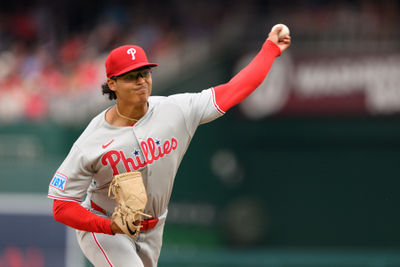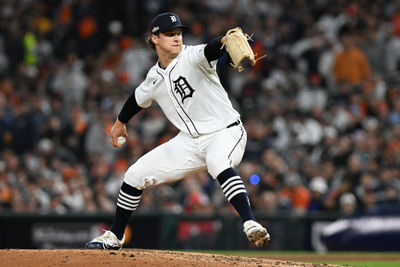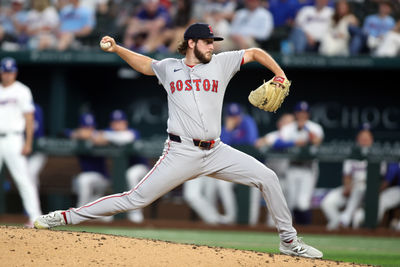Fantasy Baseball Mock Draft Strategy: Securing Ace Pitchers, Like Paul Skenes, Tarik Skubal, Corbin Burnes, Max Fried and More
Analyzing the outcome of a fantasy baseball mock after grabbing two top-tier starting pitchers early and no position players until the 30th pick of the draft.
Football is over, we're into the Dog Days of the NBA and NHL season, and March Madness is still several weeks away. This really is a down time for sports unless you're living and dying with the day-to-day of the mid-seasons.
Spring training games will soon be underway, so fantasy baseball is sneaking up on us quickly. Without much else to keep us occupied, fantasy draft season can take a little precedent; the regular season is less than five weeks away.
With so many ways to build a team, fantasy mock drafts might be more important in baseball than any other sport. Whether it's trying different strategies or seeing which players end up on your roster late in drafts, there are seemingly endless things to practice and tweak when doing mock drafts.
A few weeks ago, I used a method of essentially ignoring pitchers until the final picks, locking in a strong lineup. Pitchers usually suffer injuries more often than position players, and while starters only take the mound once or twice per week, a guy in your lineup might be there every day.
I really liked that method; I'm going to adopt that strategy in real drafts this year. That doesn't mean it's time to stop practicing, though, as there is always another advantage to be gained. With a good idea of what I want to do when ignoring pitchers, I turned to a focus on drafting a few pitchers early with the goal of seeing how much weaker the lineup looked at the expense of the aces.
I had the 10th pick in a 10-team rotisserie league and entered with the plan to take two of the top pitchers back-to-back at picks 10 and 11 before filling out the lineup. Once the position players and bench were occupied, I then completed the pitching staff with strikeout guys and high-upside hurlers.
Aces
- No. 10 SP Paul Skenes, Pittsburgh Pirates
- No. 11 SP Tarik Skubal, Detroit Tigers
What better place to start than with the reigning NL Rookie of the Year and AL Cy Young. Other guys could fit too, like Corbin Burnes and Max Fried, but this is a stud duo to start building around.
Core Hitters
- No. 30 OF Jackson Merrill, San Diego Padres
- No. 31 2B Ketel Marte, Arizona Diamondbacks
- No. 50 C William Contreras, Milwaukee Brewers
- No. 51 OF Teoscar Hernandez, Los Angeles Dodgers
With no hitting positions filled, it turned into a true best-player-available approach. Merrill was an All-Star as a rookie and finished second behind Skenes in Rookie of the Year voting. He racked up 31 doubles and 26 home runs while batting .292 in just over 550 at-bats.
After looking back, I wished I had filled third base or shortstop instead of going with Marte; Manny Machado, Rafael Devers, Austin Riley, and Corey Seager are all ranked around the 30th pick. Marte had his best season last year, hitting 36 home runs (career high) with a .292 average (second highest in any season in which he played at least 100 games). Marte is likely to see regression this season, but he should still put up nice fantasy numbers.
Contreras might be the top fantasy catcher. He has combined for 75 doubles and 40 home runs the past two seasons with an average near .285. Contreras knocked in 92 runs last year and scored 99 more; he has been racking up box stats since joining Milwaukee.
I was up on Hernandez at this time last year with the thought that he would have plenty of chances to score and drive in runs in the middle of the powerful LA lineup. Sure enough, Hernandez put up his second-highest totals in both runs (84) and RBI (99). He also had his second-best batting average in any season with at least 100 games played (.272) and set a career high in home runs (33). It would be fair to expect Hernandez to regress a little, but he's in the same situation and likely to put up good numbers again.
Multi-Position Players
- No. 70 1B/OF Cody Bellinger, New York Yankees
- No. 90 C/1B Salvador Perez, Kansas City Royals
- No. 91 3B/2B Jordan Westburg, Baltimore Orioles
I have a thing for guys who can play multiple positions. It's a great asset in real baseball, and it's something that can be leveraged in fantasy baseball as well. First base is the easiest position at which to find fantasy value, so I am a proponent of waiting to draft a guy or piecing together the position right away with the understanding you'll probably be able to find a daily starter during the season if you really want to.
Bellinger and Perez are two of my favorite mid-round picks as guys who can fill 1B while having the versatility to mix and match at other spots, especially catcher for Perez. Having a daily starter like Contreras and then a guy like Perez who can fill in when the starter sits while also being able to play elsewhere is my favorite strategy this year.
Westburg is an OK fantasy player. I grabbed him here because I didn't have a third baseman and because of his multi-positional ability. By the time we hit this point in the draft, it's good to think of guys as hopeful daily starters who you might end up streaming as a worst-case scenario.
Infielders
- No. 110 SS Ezequiel Tovar, Colorado Rockies
- No. 111 SS/2B Matt McLain, Cincinnati Reds
- No. 131 2B Jackson Holliday, Baltimore Orioles
- No. 170 3B Nolan Arenado, St. Louis Cardinals
I'll be talking about Tovar a lot in the run up to the season. Colorado hit like a top-five team at home and a bottom-five team on the road last year; the Coors Field effect is real. That means Rockies players (and opponents playing in Colorado) are relevant as at least potential streamers. The Rockies don't play at home until April 4, though, so Tovar has a lower ceiling the first week of the season.
McLain was supposed to be a breakout guy of sorts last year, but he missed the whole season after having left shoulder surgery. He batted .290 with 23 doubles and 16 home runs in just 365 at-bats as a rookie in 2023, showing his upside. Being available at both shortstop and second base makes McLain a player worth drafting in the middle-late rounds.
Holliday is a total upside play. He might spend time in the minors this year, but the former No. 1 overall pick will eventually break into a full-time role and has the potential to be a high-level fantasy player early in his career.
Arenado was the last position player I drafted: I was short at third base, and his name stood out among a lot of stream-able players. It's a bet on Arenado finding his past superstar form, and while that's highly unlikely, there are worse things to do with the 170th overall pick.
Injury Risk, Big Upside
- No. 71 OF Mike Trout, Los Angeles Angels
- No. 130 SP Spencer Strider, Atlanta Braves
I always get at least a few of these guys in the draft: Players with superstar upside but obvious injury concerns that knock their value down.
Trout played 53 of 60 games during the COVID season of 2020; in the four seasons since, he has played 36, 119, 82, and 29 games. He hasn't been on the field near enough to have a major impact on anything in real or fantasy baseball. This is a complete flier with the hope that he stays on the field more and produces at a high level. It's a low-percentage bet.
Strider threw like an ace in 2022 and 2023, but he made just two starts last season before having Tommy John surgery, knocking him out for most of 2024 and causing him to miss the start of 2025. If your league has an IL spot, Strider is a nice late pickup who could sit there until he makes his return. There's no guarantee he returns to top form right away, but Strider has a super high ceiling.
Pitching Depth
- No. 150 SP Yusei Kikuchi, Los Angeles Angels
- No. 151 SP Hunter Brown, Houston Astros
- No. 171 SP Jared Jones, Pittsburgh Pirates
- No. 190 RP Kenley Jansen, Los Angeles Angels
The rest of the pitching staff is mainly made up of high strikeout guys. Even in a poor outing, a starter who strikes out a lot of guys can put together an OK stat line; it's kind of like a running quarterback who doesn't put up much for passing stats but saves his fantasy week with a good performance on the ground.
Kikuchi has struck out at least one batter per inning in five of his six seasons and has a career K% several percentage points higher than average. Moving from the Astros (who acquired him at the trade deadline) to the Angels will hurt his win/loss numbers, but Kikuchi is still going to strike out a lot of guys, and his first start will likely come against the White Sox.
Brown has struck out more than 25% of the hitters he has faced in each of his three seasons (league average was around 22.5% last year). He's a young Houston pitcher, a group that often ends up having success.
Jones shouldn't be confused with Skenes, but Pittsburgh's second starter struck out over 26% of the hitters he faced as a rookie last season. He was right around average in walk rate and ERA, and the 23-year-old is likely to only get better.
I like the idea of skipping relievers if you're not required to have any. Forget saves; closers are flaky, and starters rack up a lot more stats if you're looking for volume. I could have taken one of about 100 different pitchers with the final pick, but I went for Jansen, the guy likely to finish games for the Angels. They won't win a ton, but getting Jansen with the last pick of the draft isn't a bad way to round out the roster.
Conclusion
This is a plan that can be successful. Skenes and Skubal are both likely to be among the top pitchers in the league, and the lineup has some nice depth and versatility. We're missing those top-notch offensive players, though.
Guys like Mookie Betts, Juan Soto, Kyle Tucker, and Fernando Tatis Jr. are among the players ranked near 10th that could have been taken with the first two picks. That would lower the level of starting pitching on the roster, but I prefer grabbing premier hitters first.
Injuries occur more often with pitchers, and because they only pitch once every five days or so, they don't offer the same potential value in points leagues as daily hitters. I like the strategy of mostly streaming pitchers and building volume while lucking into some keepers along the way (which happens every season).
I can't argue too much with grabbing one or two ace-level pitchers early, but it comes down to your preference in building your roster. It also all comes down to luck; make the picks you believe in most and hope for the best.




























